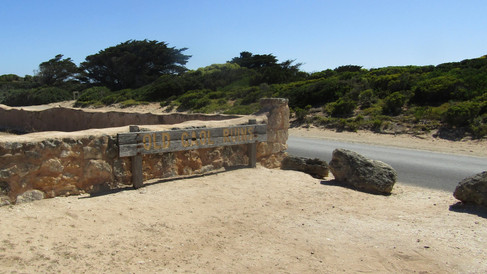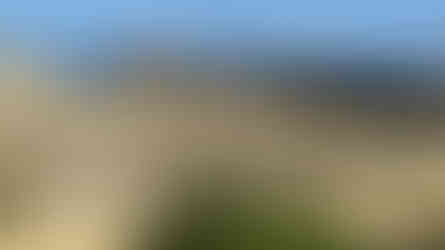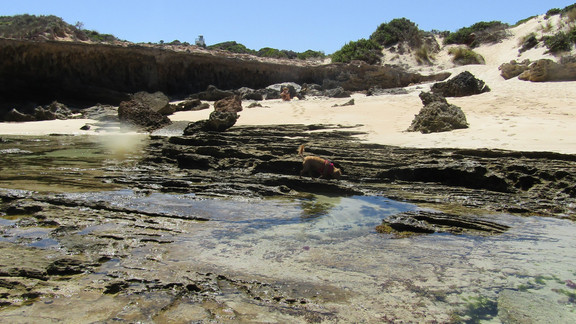Robe, South Australia
- Julie-Anne Justus

- Mar 10, 2024
- 4 min read
Updated: Apr 8, 2024
We tried a different route on our most recent road trip to Adelaide. Our pre-Adelaide destination: Robe.
South of Adelaide, Robe is a fishing port and tourist town on the Limestone Coast of South Australia. It's called the Limestone Coast is because there's lots of limestone (surprise!), which means that there are lakes, sinkholes and caves, and the coastal rocks are beautifully ravaged by time and the sea. (It's also adjacent to the Coonawarra wine region, and the stunning Coorong saline lakes, but that's another story.) It's generally very picturesque and the area is popular with tourists. Robe's population is 1,500 people; over summer, it swells to about 20,000.

Robe's historical buildings have been well preserved and are now used as cafes (of course), restaurants, shops and hotels, but really, it's the natural surroundings that are special. Robe is surrounded by small lakes, bushland, lovely beaches and clear water. More on the water temperature later.
Robe was named after then then-governor of South Australia, Major Frederick Robe, in 1845. In the 1850s it was South Australia's second-busiest international port, after Port Adelaide. No longer! Now, it's just a pretty tourist town with an old jetty.
We were (nicely) surprised to see a Chinese marker/shrine on the beach. It reminded us of Itsukushima Shrine on Miyajima in Japan, but slightly smaller. A lot smaller. And less complex. Okay, the similiarity is that it's also a wooden gate in the sea.
The memorial commemorates the Chinese people who landed at Robe in the 1850s, during the Victorian gold rush. The Victorian government had introduced a poll tax of £10 per person to deter Chinese immigrants from landing in Victoria. Undeterred, about 16,000 Chinese people landed in Robe and walked 300 km across the South Australian state border to the goldfields in Victoria.
There's a pleasant walk around the marina ...
... and some other points of historical interest. Each little fishy plaque on the Fishermen's Memorial commemorates someone who died at sea.
Like all important towns, Robe had its own prison. But the Robe Gaol operated for only 20 years from 1861 to 1881. The ruins of the Old Gaol are less interesting than the fact that it seems to have failed at its principal task, i.e. keeping prisoners confined. Three prisoners escaped over its short lifespan ... there are only four cells, so when you think about it, the escape rate was pretty high. One of the prisoners knocked out the guard with an axe handle (a prisoner with an axe?) and escaped, never to be found — until eight months later when his salt-encrusted body was discovered near one of the region's salty lakes. Water, water everywhere, and not a drop to drink! The official reason that the gaol was closed was because there were not enough prisoners. (Probably because they'd all escaped!)
In another instance of less-than-successful design, an obelisk was erected on one the Robe clifftops in 1852 to warn ships of the rocky coastline. It looks like a traffic cone, which on reflection it actually is — only for ships, not vehicles. The Robe Obelisk is visible from 20 km out at sea, apparently, but ships continued to be wrecked along the coast until the modern lighthouses were built. Now, however, the Obelisk is in danger of disappearing as the clifftop crumbles from erosion. Visitors used to be able to walk to the cliff's edge, to the Obelisk, but no more.
I do like the yellow sign that shows the falling person so much bigger than the tree.
The clear water looks so inviting, right? Sadly the water temperature in Robe is lower than other places a relatively short distance away. In mid summer, when we were there, the sea temperature was about 16 degrees! Very chilly! Apparently there's a sea current that sweeps north from the Antarctic and lands in Robe. In mid-winter, beach water temperatures in South Australia range between 13 degrees and 17 degrees, but the water in Robe gets as low as 9 degrees.
It's certainly possible to paddle in the icy waters, if not swim. Once your feet and ankles are frozen, you don't feel any more pain and it's quite pleasant really.
And then there's Long Beach. About 12 km long, it's one of the few Australian beaches that you're allowed to drive on.
This is all very well, you say, but what of the eating and drinking? There are the usual pubs and hotel bars, main street restaurants, etc. There's also the Robe Town Brewery, a microbrewery that does good beer and serves excellent fresh pasta at night. And, very wonderfully, allows dogs inside! Yes, it's totally dog-friendly.
Terrible video, sorry. I will replace this when we are next there.
There's Mahalia Roasters, a coffee micro-roastery, that serves great coffee and good food. And provides plenty of dog bowls, too, which is always a good sign.
But Robe is most famous for its rock lobster. The importance of this region as a rock lobster centre is highlighted by Larry the Lobster, a 17 m critter in Kingston, about half an hour's drive from Robe. Yes, it's one of Australia's Big Things ... along with the Big Banana, Big Koala (not far away, in fact), Big Pineapple, etc.
We had some lobster on a focaccia sandwich but next time we're in Robe we'll target the whole beast. I'll also look out for the seaglass cove. This is the site where old bottles were dumped into the sea many years ago. Polished seaglass is one of the things I like to pick up from our travels — so it's on the list.
An interesting little town. We'll be back!


































































































Comments